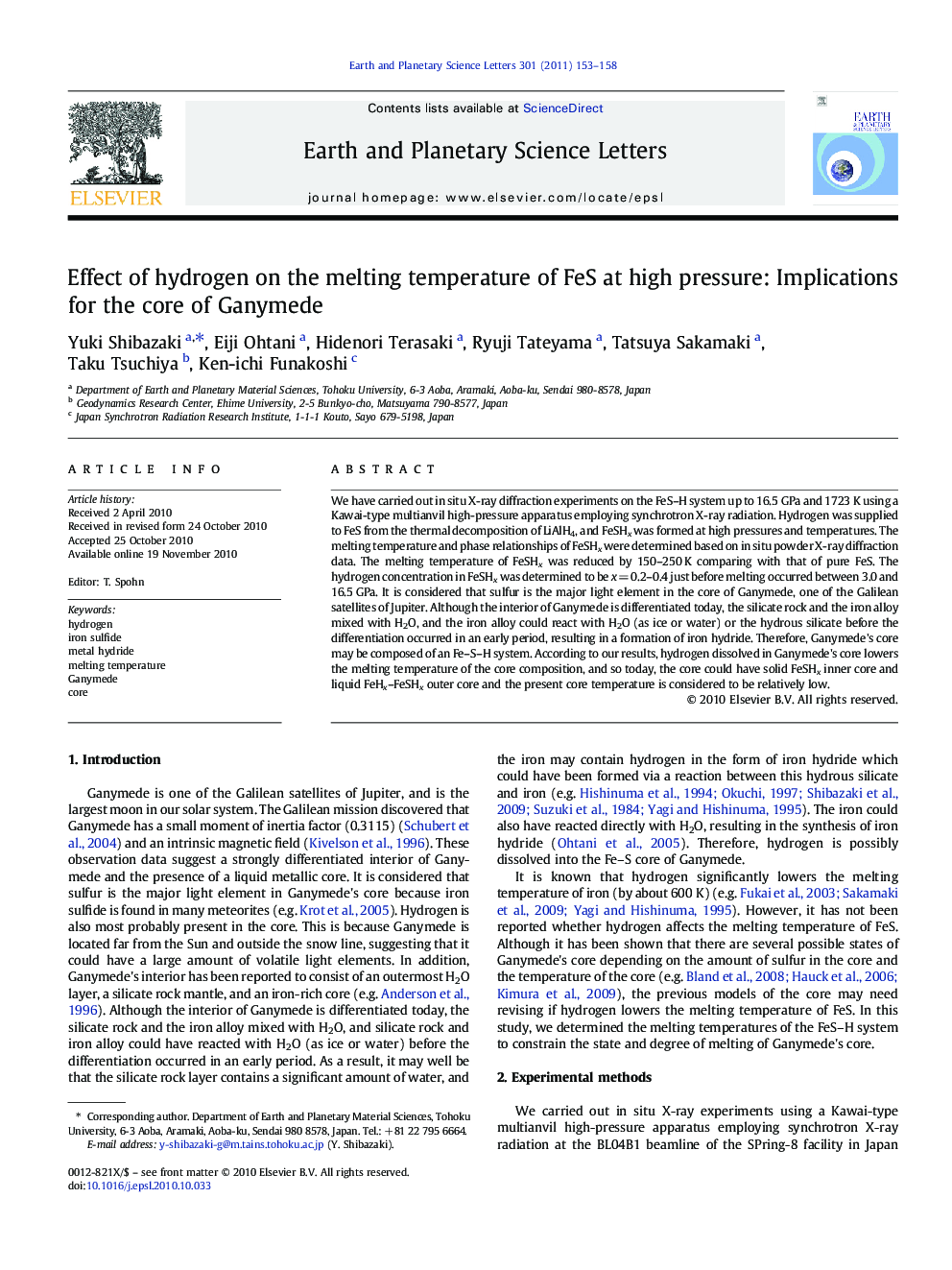| کد مقاله | کد نشریه | سال انتشار | مقاله انگلیسی | نسخه تمام متن |
|---|---|---|---|---|
| 6430847 | 1634838 | 2011 | 6 صفحه PDF | دانلود رایگان |

We have carried out in situ X-ray diffraction experiments on the FeS-H system up to 16.5 GPa and 1723 K using a Kawai-type multianvil high-pressure apparatus employing synchrotron X-ray radiation. Hydrogen was supplied to FeS from the thermal decomposition of LiAlH4, and FeSHx was formed at high pressures and temperatures. The melting temperature and phase relationships of FeSHx were determined based on in situ powder X-ray diffraction data. The melting temperature of FeSHx was reduced by 150-250 K comparing with that of pure FeS. The hydrogen concentration in FeSHx was determined to be x = 0.2-0.4 just before melting occurred between 3.0 and 16.5 GPa. It is considered that sulfur is the major light element in the core of Ganymede, one of the Galilean satellites of Jupiter. Although the interior of Ganymede is differentiated today, the silicate rock and the iron alloy mixed with H2O, and the iron alloy could react with H2O (as ice or water) or the hydrous silicate before the differentiation occurred in an early period, resulting in a formation of iron hydride. Therefore, Ganymede's core may be composed of an Fe-S-H system. According to our results, hydrogen dissolved in Ganymede's core lowers the melting temperature of the core composition, and so today, the core could have solid FeSHx inner core and liquid FeHx-FeSHx outer core and the present core temperature is considered to be relatively low.
Research HighlightsâºThe melting temperature of FeSHx is reduced by 150-250 K comparing with that of FeS. âºThe hydrogen concentration in FeSHx is x = 0.2-0.4 between 3.0 and 16.5 GPa. âºThe Ganymede's core has solid FeSHx inner core and liquid FeHx-FeSHx outer core.
Journal: Earth and Planetary Science Letters - Volume 301, Issues 1â2, 3 January 2011, Pages 153-158